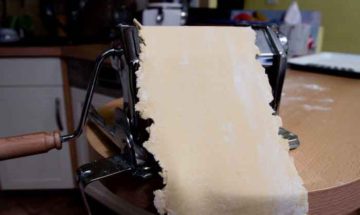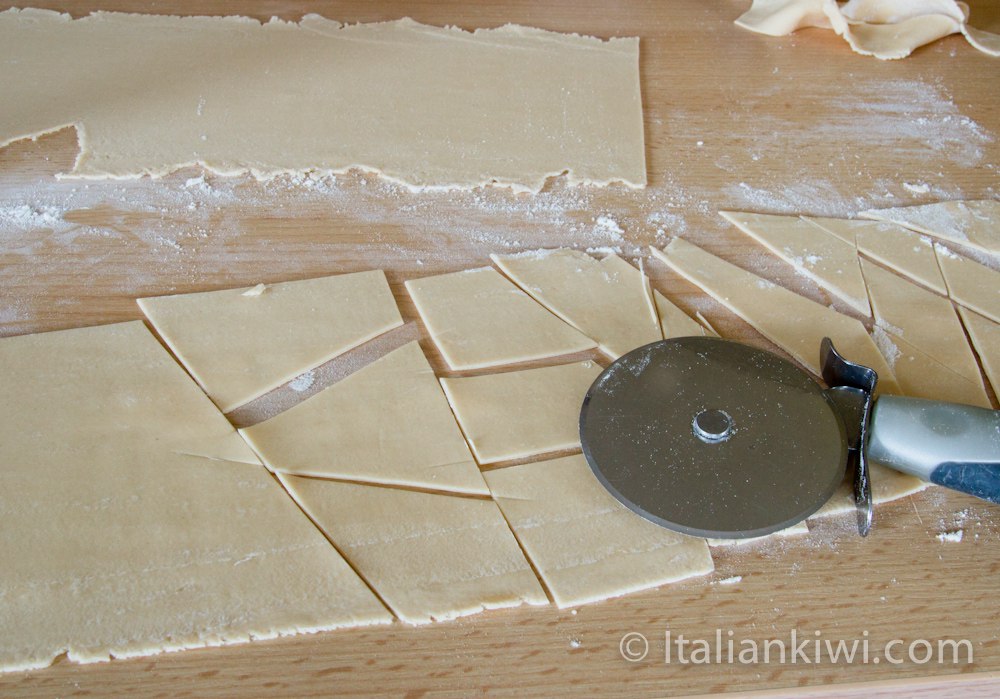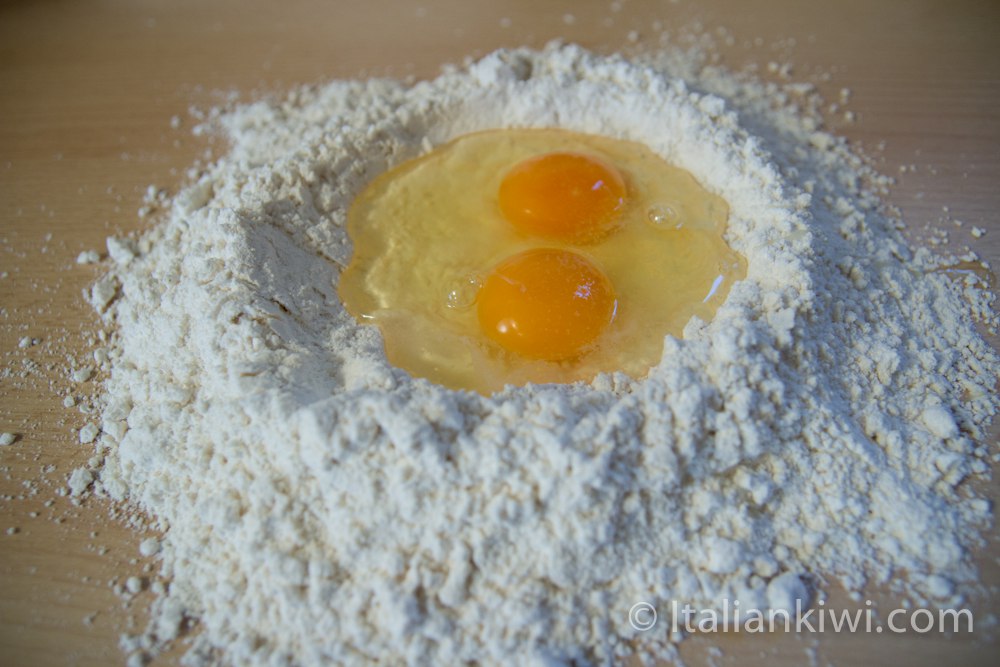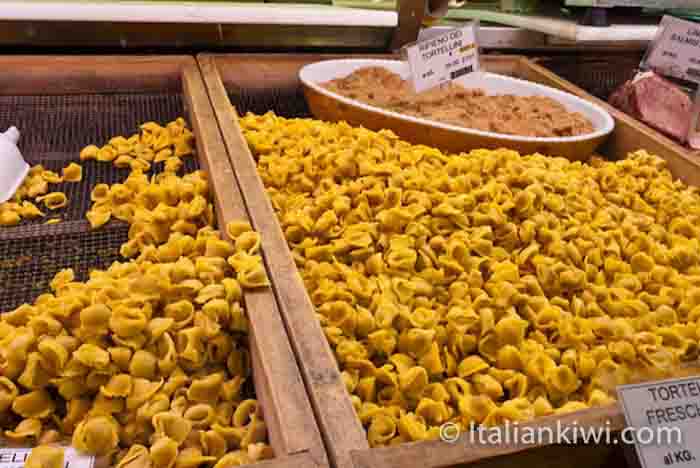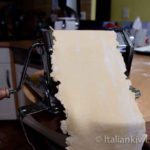It’s finally time to make fresh pasta
This post is way overdue! I’ve been writing for nearly two years now, and haven’t yet put up a post on how to make fresh pasta……and I call this an Italian cooking blog??!! Shame on me! I’m just lucky I haven’t had my Italian passport revoked yet. Now, however, with this recipe for fresh pasta, I will be able to stop slinking around with my tail between my legs. I will hold my head high and become one of the many Italian cooking blogs who have had fresh pasta up on their blogs since they began writing them. It’s true that I shouldn’t just blend in with everyone else (unless I’m living in George Orwell’s 1984 book) , but fresh pasta is an important part of Italian culinary tradition, and really needs to be written about. I’m definitely not going to go into where it originally comes from, as in the past, that’s sparked some pretty major arguments. So, let’s just say it was introduced to Italy a few centuries ago, starting in Sicily, and leave it at that.
The myth about Italians and pasta is false
In the North of Italy it was usual to eat fresh pasta only for special occasions. My mother-in-law tells me that when she was a girl, they usually ate rice dishes, and for various important occasions, such as Christmas, fresh pasta would be made at home. Filled pasta, such as ravioli and tortellini, such as the Bolognese ones below in the photo, can only be made using fresh dough (try stuffing some dried pasta with a filling and see what happens). This kind generally comes from the North of Italy as well. The word on the street is that the idea of stuffing it originated in Tuscany. My Tuscan friends tend to think that everything originated there, including the way Italian is spoken now, so I’m not sure whether to believe it or not. I mean, what was the rest of Italy doing then? Snoozing? Hanging out in the bathroom and reading?
Making fresh pasta at home is easier than you think
Making pasta at home not terribly difficult. It elevates an ordinary dish to something truly extraordinary. For that special occasion, or even just if you have a rainy day and the kids are bouncing off the walls, it’s the perfect thing to make. The only tools you really need are strong arms (or lots of helpers) and some patience. You can use any flour. I generally use all-purpose flour to make mine as I always forget to buy durum flour. When you have an urge to make pasta, there’s no time to rush to the shops! Once you get the hang of making it, you can start adding little touches, such as finely diced spinach to make it green, or beetroot juice to make it an amazing purple colour, or even squid ink, if you can get it, to turn it a deep black.
Travel photo of the week
Since pasta has been embraced by the whole of Italy, here is a random photo from the very south of the country. On the north-east coast of the island of Sicily, you can visit a closed down factory where they processed catches of tuna once upon a time. It’s not a bathing spot with crystal clear water. The only problem is finding a flat place to sit on the rocks!
Once you’ve made your pasta, you can use any sauce you like: maybe some meat ragù or how about a delicious vegetarian recipe for lentil sauce.
By Lisa Watson
How to make fresh pasta
Ingredients
- 100 g Flour 1 cup per person
- 1 Egg per person
- 1 pinch Salt per 100g of flour
Instructions
- Pile the flour on the kitchen bench, then make a well in the middle of it. Add the pinch of salt, then crack the eggs into the middle of the well.
- Start mixing the egg into the flour with a fork. As the dough starts to stick together, start kneading it with your hands. If the dough is very dry and flakey (if your eggs are smaller this may happen), add water 1 tablespoon at a time, and continue to knead. Now this is the arduous part: knead the dough for 15 -20 minutes until it becomes smooth and elastic (this is the bit to get your kids involved in!).
- Once it looks like the photo above, wrap it in plastic wrap and leave it to rest for 30 minutes. (This is the point at which you need to sit down and have a nice cup of tea or coffee).
- If you have a pasta machine, now is the time to pull it out of the cupboard. If not, grab a rolling pin! Prepare a cookie tray by sprinkling flour on it.
With a machine
- Break off parts of the dough. Keep the rest well wrapped so that it doesn’t dry out. Start feeding the dough through the machine (or rolling it out) at the widest setting. Fold the dough in half and feed it through again. Then, move to the next setting down and repeat the process. The thicknesses run from “6” to “1”. I usually stop at thickness “2”. Sprinkle flour on the dough if it starts to stick.
Without a machine
- Sprinkle flour on the bench-top. Break the dough in half. Cover the one half again, and roll out the other half of the dough, turning it every so often so that it doesn't stick, and sprinkle it with flour every now and then. Keep rolling until you have a thin sheet. After cutting up the sheet into your desired shapes, roll out the other half.
- When the dough is a long smooth sheet, you can cut it in any shape you like. If you have a pasta machine with a attachment, it's easy to make tagliatelle. I like making "maltagliati" ("badly cut") pasta. To do this, you lie the dough strip on the kitchen bench, then using a pizza cutter, or a sharp knife, cut the dough into random shapes.
- When the shapes are cut, lie them carefully on the prepared cookie sheet and sprinkle with more flour.
- Cover the pasta with a tea-towel and continue the process with the dough that has not been used yet. It is best if you use the pasta the same day that it is made. It should be kept in the fridge until you want to cook it.
